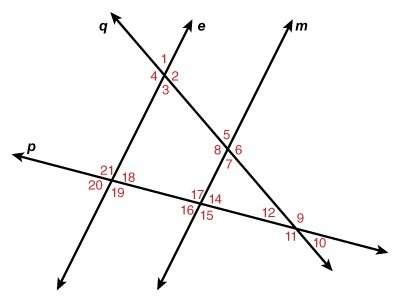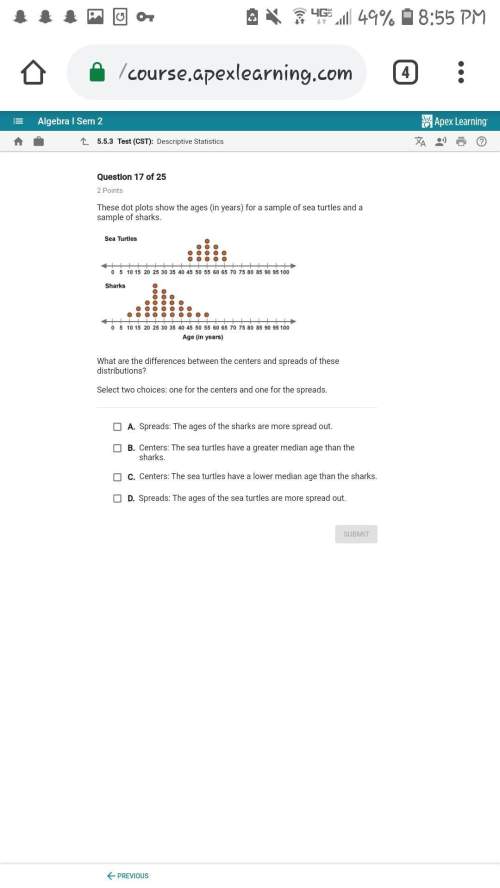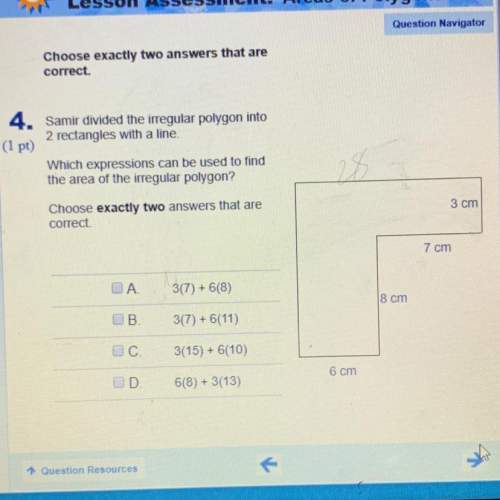
Mathematics, 12.10.2019 19:30, CM0
In the diagram, lines e and m are parallel to each other and lines p and q are transversals. use properties of special angles, formed by parallel lines and their transversals, to describe the relationship between the angles. note: figure is not drawn to scale.
e || m; lines p and q are transversals
6 and 4 are angles.
6 and 2 are angles.
5 and 7 are angles.
19 and 17 are angles.
9 and 11 are angles.
21 and 15 are angles.
17 and 14 are angles.
3 and 8 are angles.




Answers: 2
Other questions on the subject: Mathematics

Mathematics, 21.06.2019 23:30, jadenweisman1
The approximate line of best fit for the given data points, y = −2x − 2, is shown on the graph. which is the residual value when x = –2? a)–2 b)–1 c)1 d)2
Answers: 2

Do you know the correct answer?
In the diagram, lines e and m are parallel to each other and lines p and q are transversals. use pro...
Questions in other subjects:

History, 15.10.2019 03:40

Mathematics, 15.10.2019 03:40


Mathematics, 15.10.2019 03:40

English, 15.10.2019 03:40












